This review was conducted for free using a couple of demo bikes that were provided by Momentum. My goal is to be transparent and unbiased with you, this video and writeup are not meant to be an endorsement of Momentum products. I welcome your corrections, additions, and feedback in the comments below, and the Momentum electric bike forums.
Observations:
- Giant is one of the “Big Three” bicycle brands that serve North America, and Momentum is their lifestyle sub-brand. Their network of dealers is extensive, providing opportunities for fitting, test rides, and post purchase service and repairs. It’s especially handy for this model, because it only comes in high step but offers three frame sizes you might want to test ride before making a decision.
- Even though the motor power and battery capacity for the Voya E+ models is a bit low by today’s standards, they actually feel zippy and capable. Their hardware choices ensure reduced weight, efficient rolling, and a more natural ride feel in part due to the torque sensing controller. For me, it felt like 200% of what my own body is capable of when climbing. It’s a good platform for active sporty riding, and Momentum sells a range of hardware accessories for commuting too.
Pros:
- I enjoyed riding the bike, even unassisted, they executed the sporty light weight design very well and it wasn’t as uncomfortable as it could have been. The stem spacers, riser handlebar, and saddle are on point. Having three frame sizes to choose from really makes a difference since it only comes in high-step.
- Most of the cables and wires are internally routed, so the bike looks beautiful and won’t get snagged or damaged as easily at bike racks. The motor power cable has a quick disconnect for easier servicing, is positioned on the left side of the frame, and doesn’t stick out at all. This adds convenience, reduces clutter near the derailleur, and reduces potential for damage.
- Momentum chose microSHIFT for the drivetrain on the Voya E+ 3 while going with Shimano for the E+ 1 (the drop-bar model). Both have a clutch system that reduces chain bounce, but still allows for easier wheel removal and maintenance. Both offer a good range of 11 to 42 teeth, so climbing feels comfortable as well as higher speed cadence.
- I noticed two clear plastic stickers that were added to the frame to protect the beautiful paint. One on the chain stay and one on the steer tube. There’s also an alloy guard on the chainring to keep your pant leg clean and protect the teeth from curb strikes. Note the color matched fork, and the two color options… both look very nice.
- It’s not relevant for the North American models right now, but this frame actually has a break point on the right seat stay. This enables a belt drivetrains to be used vs. a chain. This kind of thing adds cost, but I actually think the price point is pretty good. Giant has economies of scale, being one of the biggest bicycle manufacturers.
- I noticed that the front wheel uses fewer spokes and narrower spokes that reduce weight and add some flex for comfort. The rear wheel, where the motor and optional cargo rack are, requires more strength. The hub spacing is Boost 148mm extra wide for a sturdier spoke bracing angle. The spokes are thicker 13 gauge, and there are 36 vs. 32 up front. The rims use reinforcement eyelets that reduce the chances of cracking. It’s a nice setup and I appreciate the attention to detail.
- There are lots of mounting points on the frame for adding accessories like fenders, front and rear racks, a rear frame lock (sometimes called a cafe lock), a rear or center kickstand, and two bottle cages! There are even some mounts on the right side of the frame that I’m not familiar with… I really appreciate the mounts, because the add a lot of utility and potential for creativity that would otherwise be missed, and is often not present on lighter road bikes.
- The stock tires are great. They provide an efficient quiet tread pattern that still offers some grip. They are skinny, but provide a good pressure range of 50 to 85 PSI, so you can lower them for comfort if you wish. They are ebike rated for high speed use, have puncture protection, and offer reflectivity for safety.
- Great total weight rating of 344lbs! so if you subtract the weight of the bike from this number, the bike can handle about 300 pounds including rider and any accessories and gear you add. This is above average.
- Even though the motor system is designed for Class 1 20mph top speeds, the bike can easily be pedaled faster. The gearing is comfortable beyond 20mph, and the shifters are easy to reach and actuate. I like that the low shift lever has a rubberized pad, and both use thumb activation vs. pointer finger, so you can keep your fingers on the brakes at all times.
- The Tektro hydraulic disc brakes offer a decent 160mm rotor and standard dual piston calipers. They will stay cleaner than rim brakes, and are easier to actuate. Given the added weight of an ebike vs. standard road bike, and possible higher speeds, I’m glad they went with hydraulic disc brakes here.
- The bike frame is well balanced front to rear, I was able to lift and balance the frame by holding the top tube near the center (just in front of the saddle nose). The hub motor only weighs 3.7lbs according to the Momentum specs, and the battery is positioned low and center in the downtube for a low center of gravity. I’m guessing that the battery only weighs 5lbs.
- The bike is compatible with Giant’s RideControl smartphone app for Android and iOS, and it’s pretty neat. Not only does it give you trip stats, allow you to adjust the LED display brightness, check the battery health, plan routes with GPS, and see precise battery percentage (vs. a 5 bar 20% generalized readout), but it also connects to Ant+ wireless health hardware (like heart rate monitors), and syncs with the Strava app!
- The battery packs use premium Panasonic cells that are known for being near the top in terms of reliability and overall lifespan. Help make them last by keeping the pack from reaching zero, and topping it off if you haven’t ridden for a couple of months.
- The motor was fairly quiet, responded very quickly because of the four sensor design, and is small and hidden visually. The bike almost doesn’t seem electric, it’s very stealthy and blends in… I feel like it could level the playing field for people of different ages and abilities to keep up on hills, in the wind, or on longer journeys.
- Vast network of dealers means that you get in-person advice, fitting, post-purchase tuneups and warranty support. This should not be overlooked if you ride frequently or have limited experience with bike tools, even though it does add to the price of the initial purchase. I believe that the electronics are IPX6 rated against dust and water, so the bike should be extra durable.
Cons:
- To me, the price point seems pretty low in some ways… because the product is backed by a large company, the custom frame is so refined, you get the sizes and colors etc. but it can definitely add up if you purchase the optional headlight, the RideControl Ergo 3 button pad, front and rear rack, and fenders.
- As much as I love the reflective tires and bright yellow color for safety, I do appreciate integrated lights. I’m mixed on their optional headlight upgrade, having not tested it, and wish that they also had an optional integrated rear light too.
- The all-aluminum frame and fork are less comfortable than steel, and don’t offer any suspension. The narrower tires don’t help either, but the taller wheel size does lower the attack angle, and there appears to be enough room to swap in higher volume treaded gravel tires! I would also consider a 30.9mm suspension seat post if you plan to ride on bumpy terrain. Thankfully, the geometry is fairly upright and the saddle is very comfortable.
- The optional plastic fenders are adjustable, which is great if you do get a second set of tires for off-road use or comfort. However, the fender support stays are metal and kind of stick up past the plastic. They ship with rubber tip protectors, but those can get lost and the metal can be sharp. I prefer the non adjustable perfect fit fenders, which tend to stay in place… but then you’d lose adjustability here. I’m mixed on this, just keep track of the rubber tips if you get their fenders.
- The front rack is mounted to the fork, so it adds weight to your steering and can tip to the side and dump out more easily when parked. I prefer the steer tube mounted racks that stay inline with the frame. It’s interesting that their rack comes in small, large, and has side rails sold as an option.
- The bike doesn’t ship with a kickstand, that’s another paid upgrade. For a bike that’s designed to be used in cities and potentially for commuting, a kickstand is something that I really appreciate and missed here.
- This is a minor detail, but I’m not a huge fan of the pedals included here. The center portion is aluminum alloy, but the surround and platform is steel. The steel can get bent in if the bike tips, and can get scratched and sharpened, and rusty over time.
- The RideControl GO LED display is positioned on the top tube vs. up on the handlebar, so you have to look down farther to read the assist level and battery charge level. Furthermore, in order to change assist levels while riding, you need to take one hand completely off the bar and reach. I’d probably stop before pressing the button, or consider paying extra for the RideControl Ergo 3 button pad that can mount near the left grip.
- The battery pack is semi-permanently mounted inside the downtube. You can take it out of the frame by using a hex wrench on some bolts securing a plastic shield at the bottom bracket… but this is mainly for repairs or replacement. Ultimately, it’s best to keep Lithium-ion battery packs maintained 20% to 80% and stored in a cool dry location. Extreme heat and cold can negatively affect lifespan and range. This means you need to put the whole bike in a cool dry location, which could be difficult and create messes vs. if the battery was simply removable.
- Charging the battery can be difficult since you basically need to bring the entire bike near a plug. It means that you might not be able to charge at school or work during the day, if there isn’t a plug near the bike racks. The charging port for the frame is also a bit inconvenient, located very close to the spindle on the left side of the frame. It’s directly in the path of the left crank arm.
- I was surprised that the front wheel connects with a quick release skewer while the rear wheel and seat post clamp use hex bolts. I’d either appreciate the convenience of a quick release seat clamp for adjustability, or the security of a locking front wheel so nobody will tamper with my bike.
- This is a minor gripe, but the grips are kind of basic and do not lock. They could twist if you really bear down, but I like that they have some ergonomic bulge vs. being perfectly round.
- The motor and battery are minimalist, they are the weakest and lowest capacity I see in terms of rating. I do think they work well on this particular “sporty efficient” frame, but not being able to purchase a second battery to carry along or swap mid-day is a drawback. At least the included charger is twice as fast as most basic chargers. It should fill the battery in 2 to 3 hours depending on how low it gets.
- I think you can use the Giant RideControl smartphone app to tune motor characteristics for the fancier mid-drives (manufactured by Shimano) on some of their other models. I didn’t see those options for this hub motor setup. Not a huge deal to me, but something you do lose with the cheaper simpler Voya E+ models.

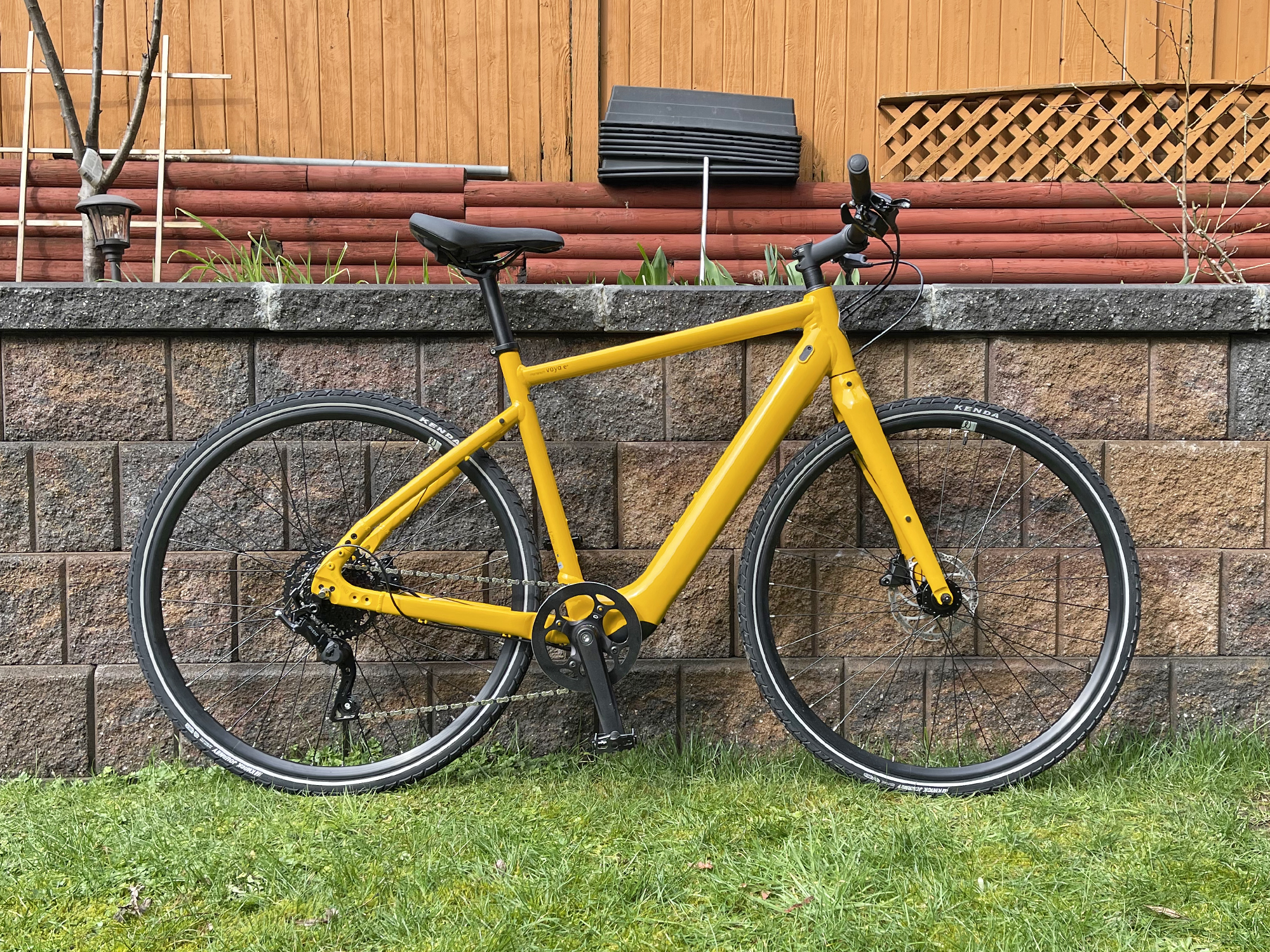
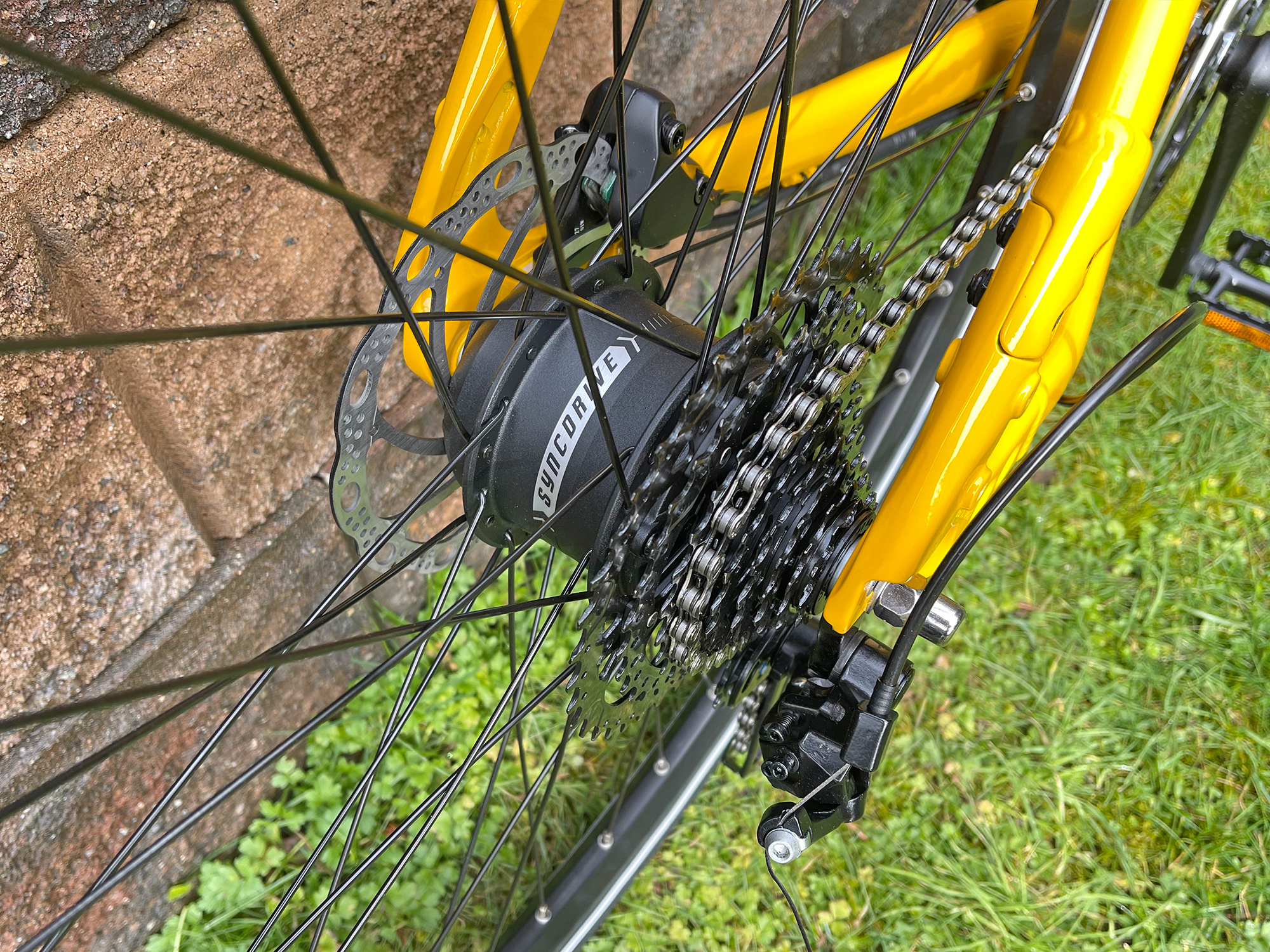
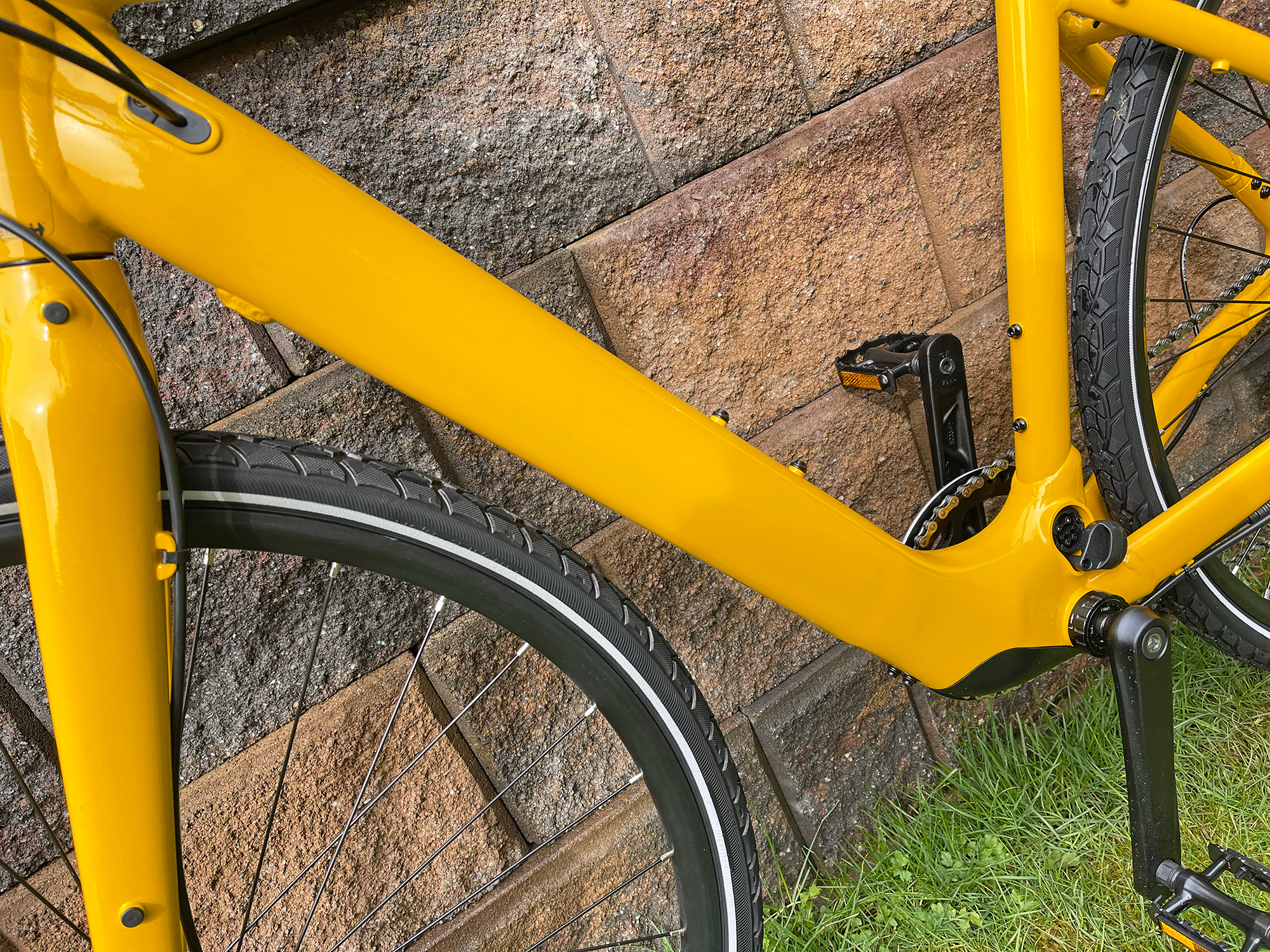
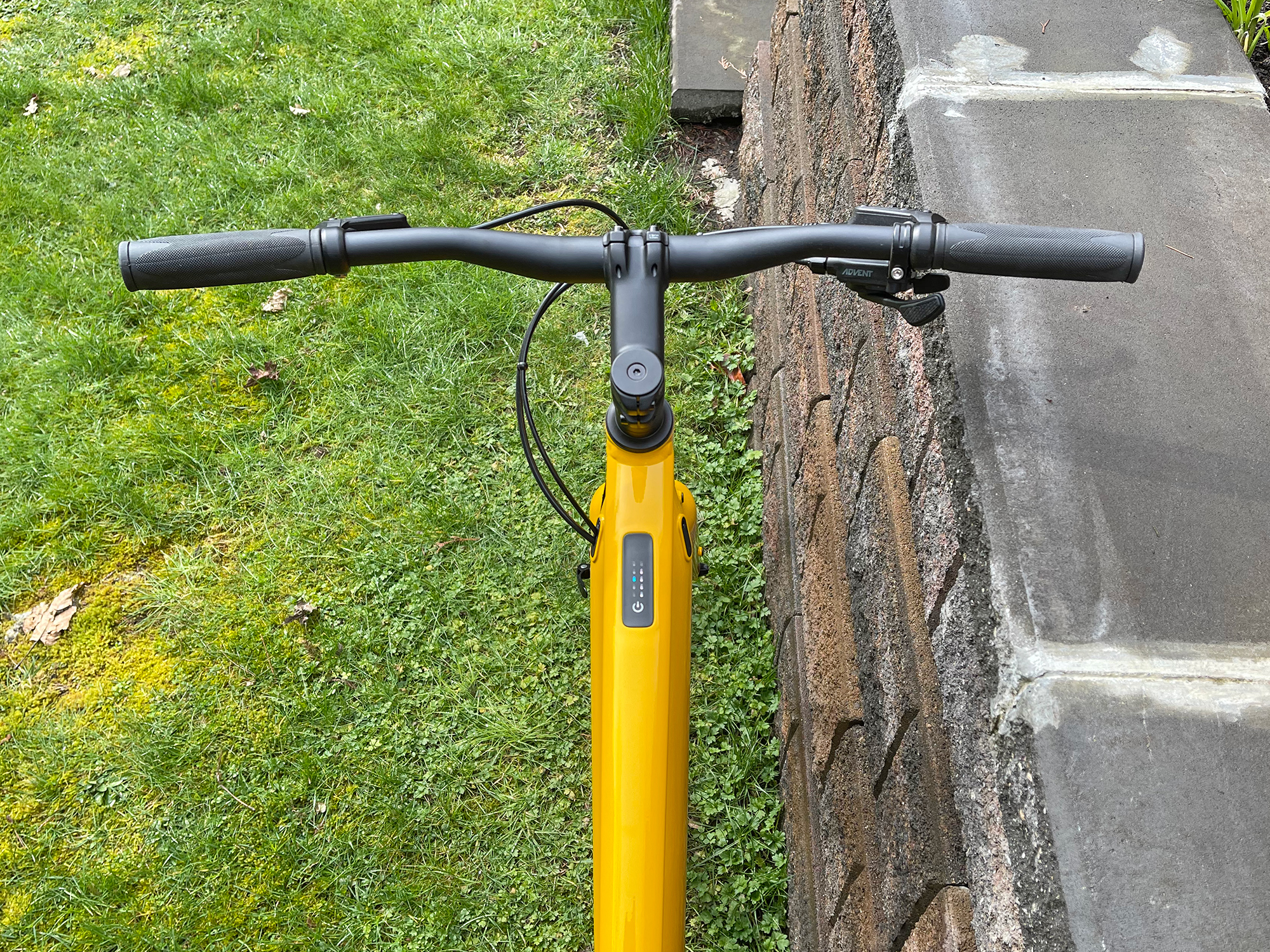

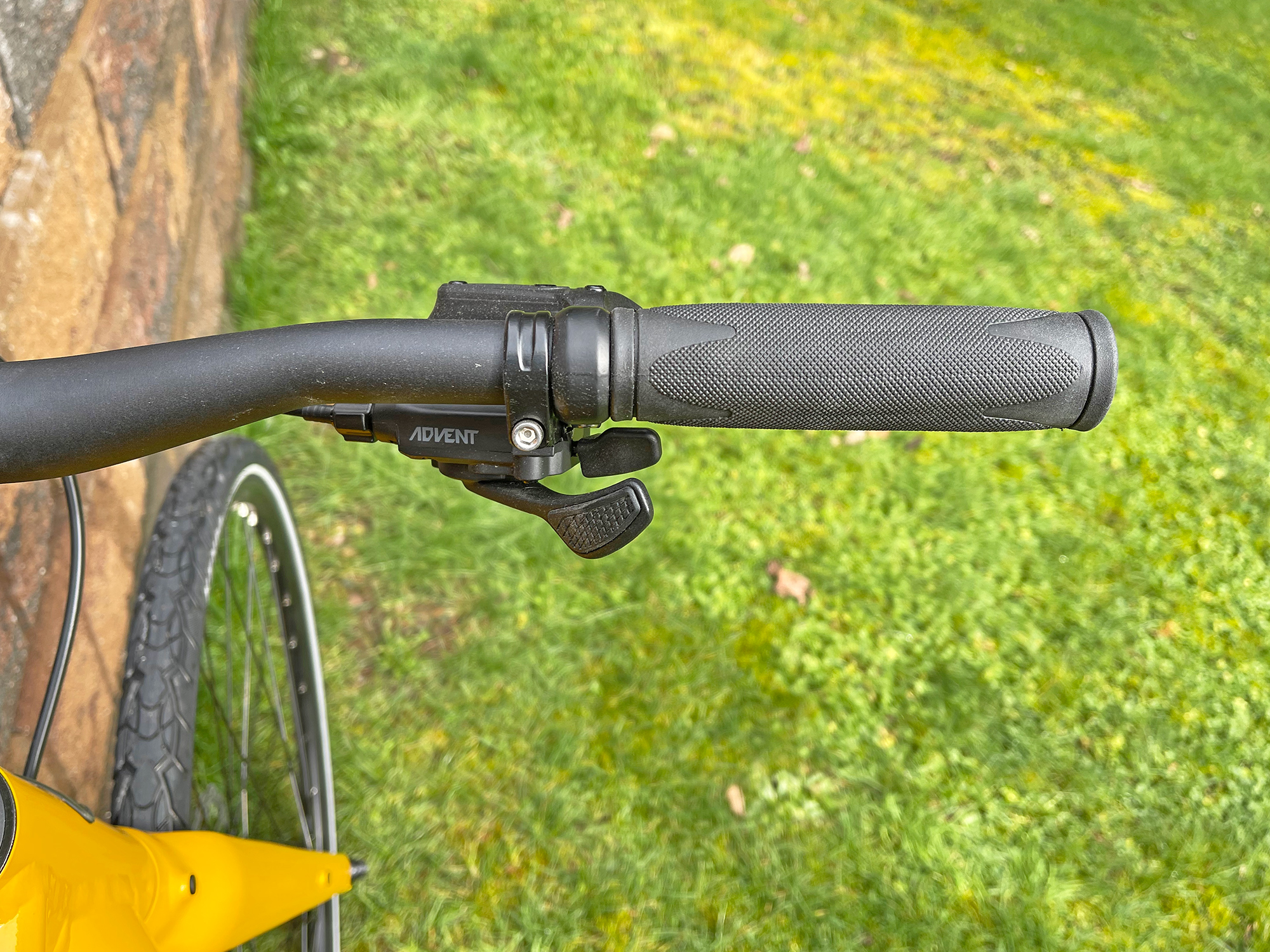

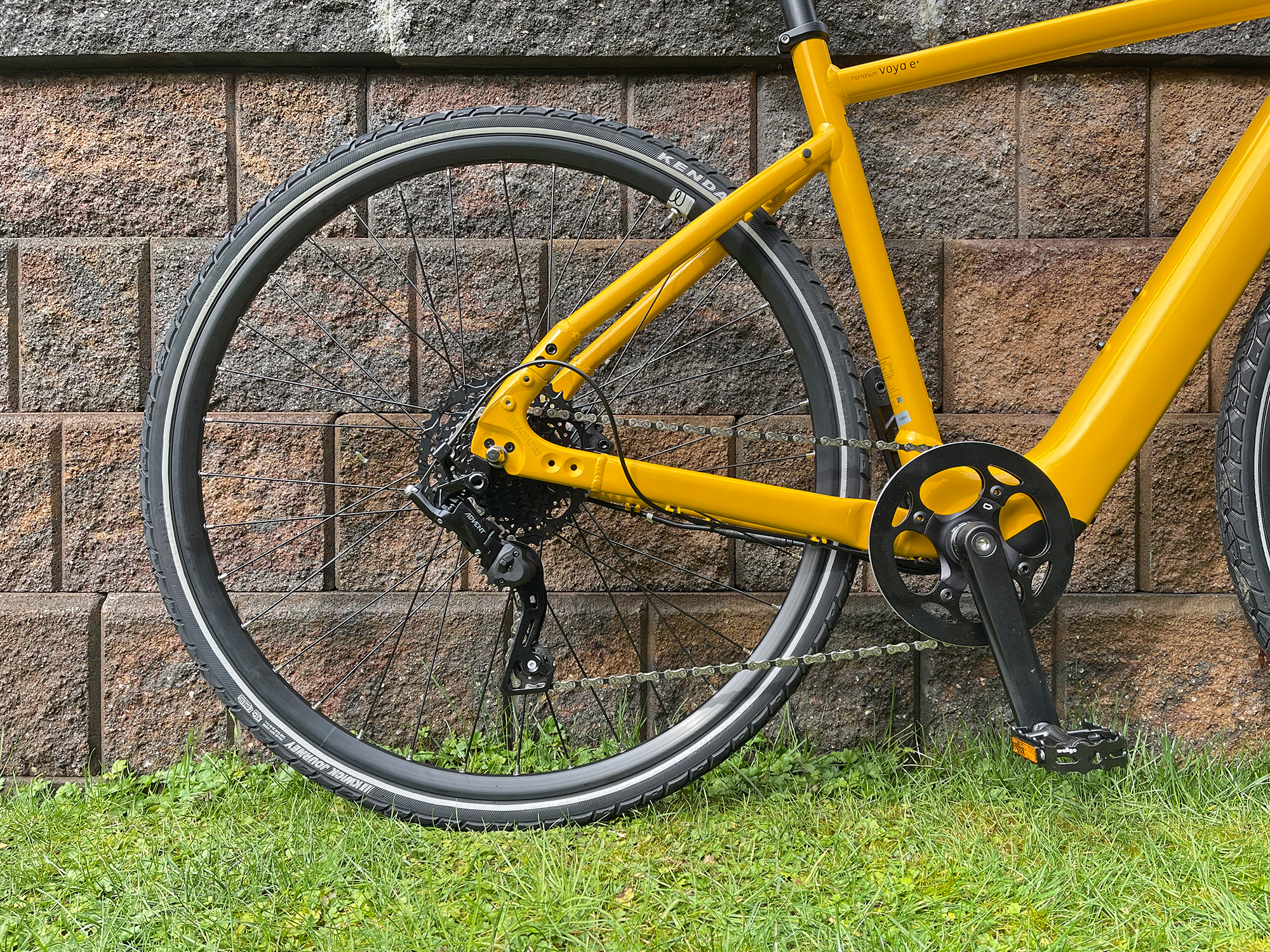
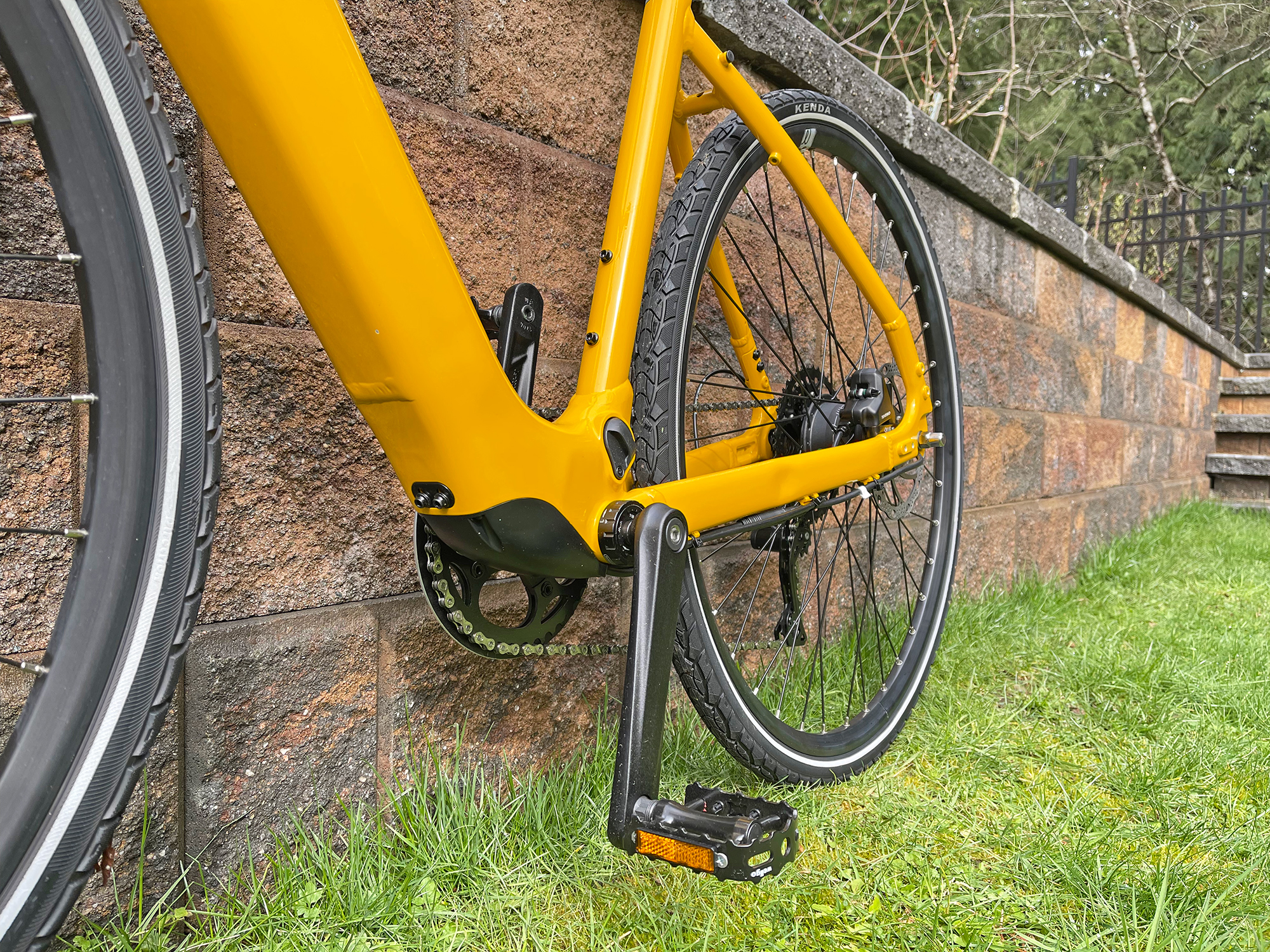
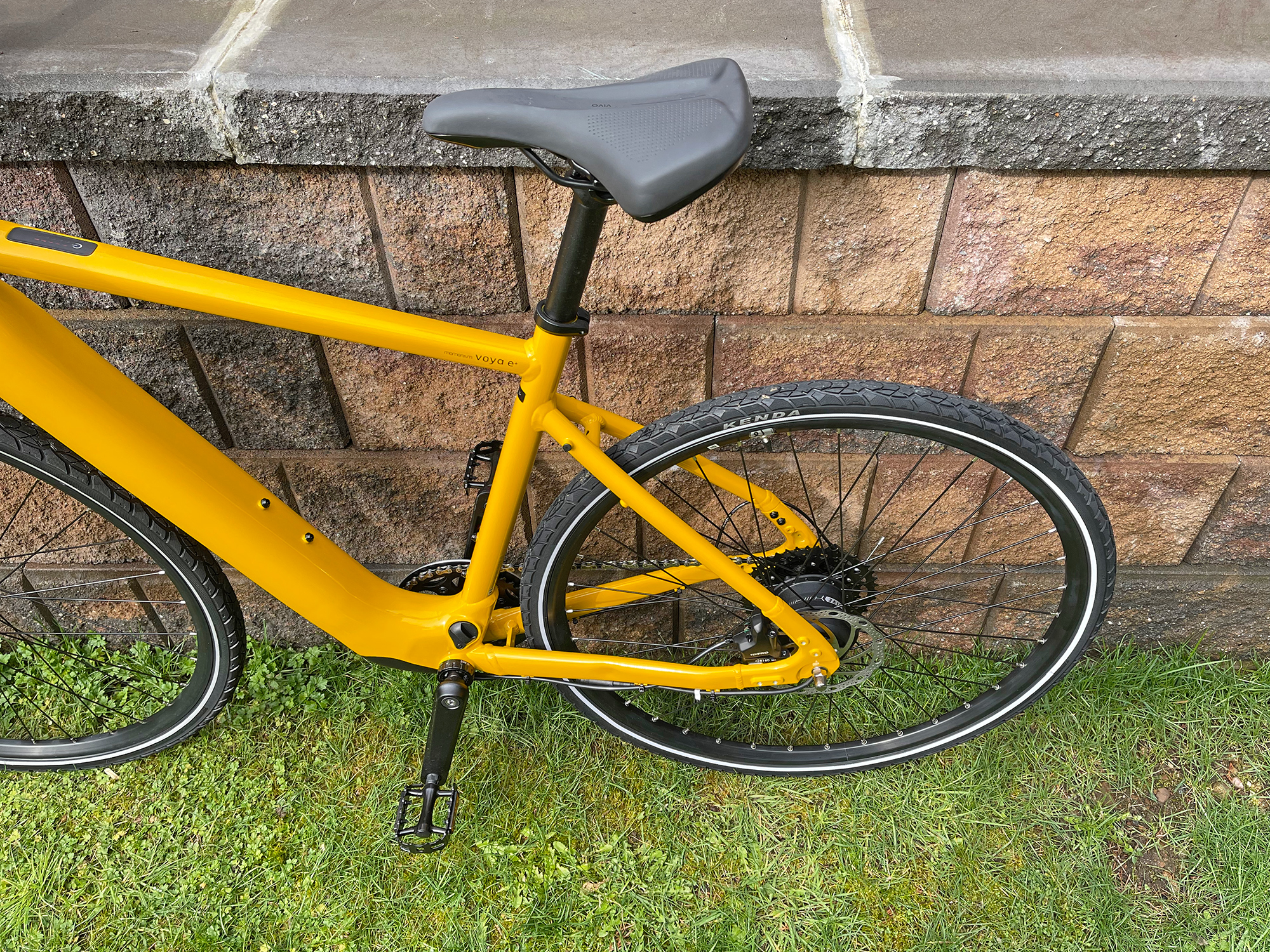

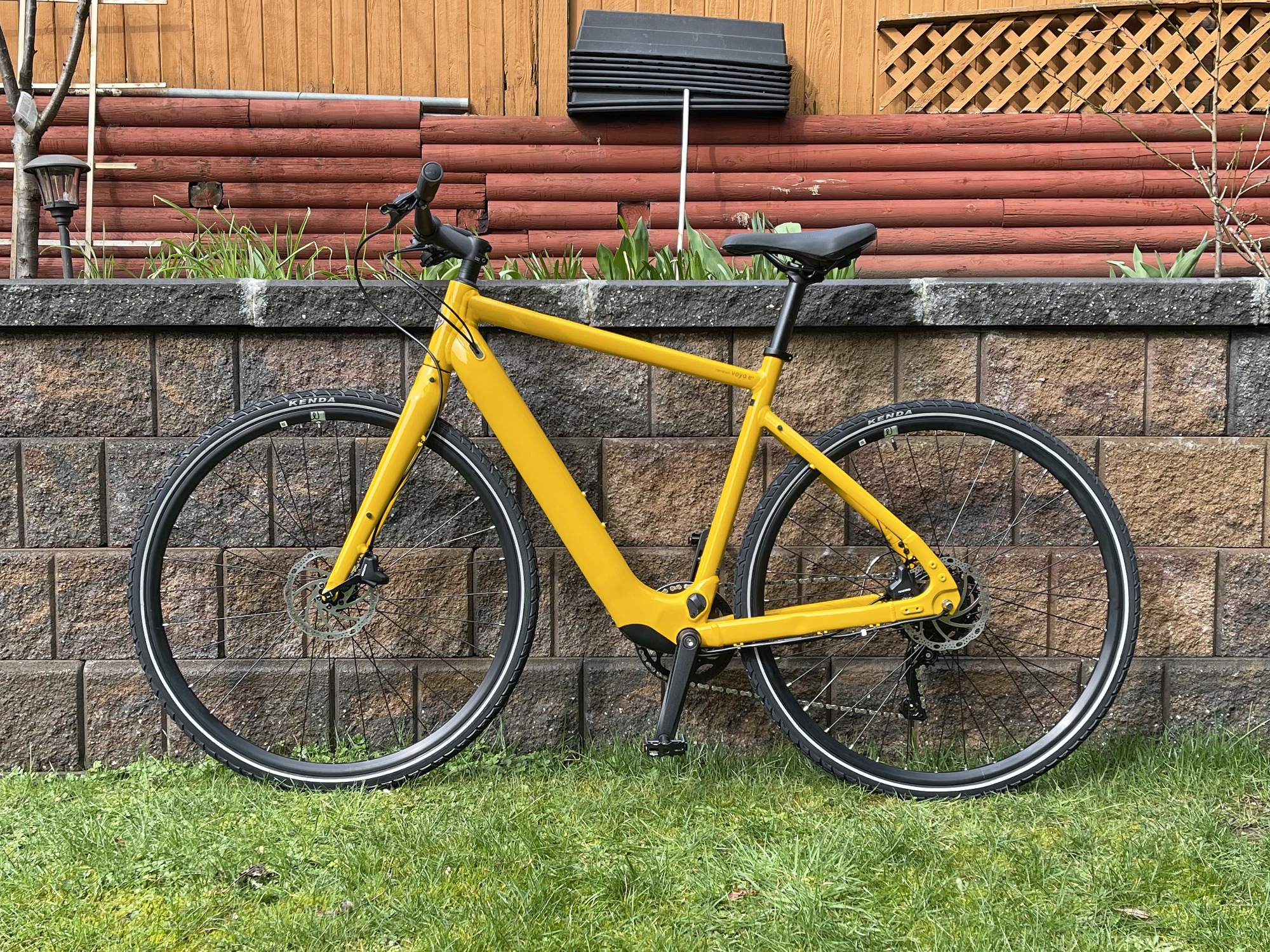
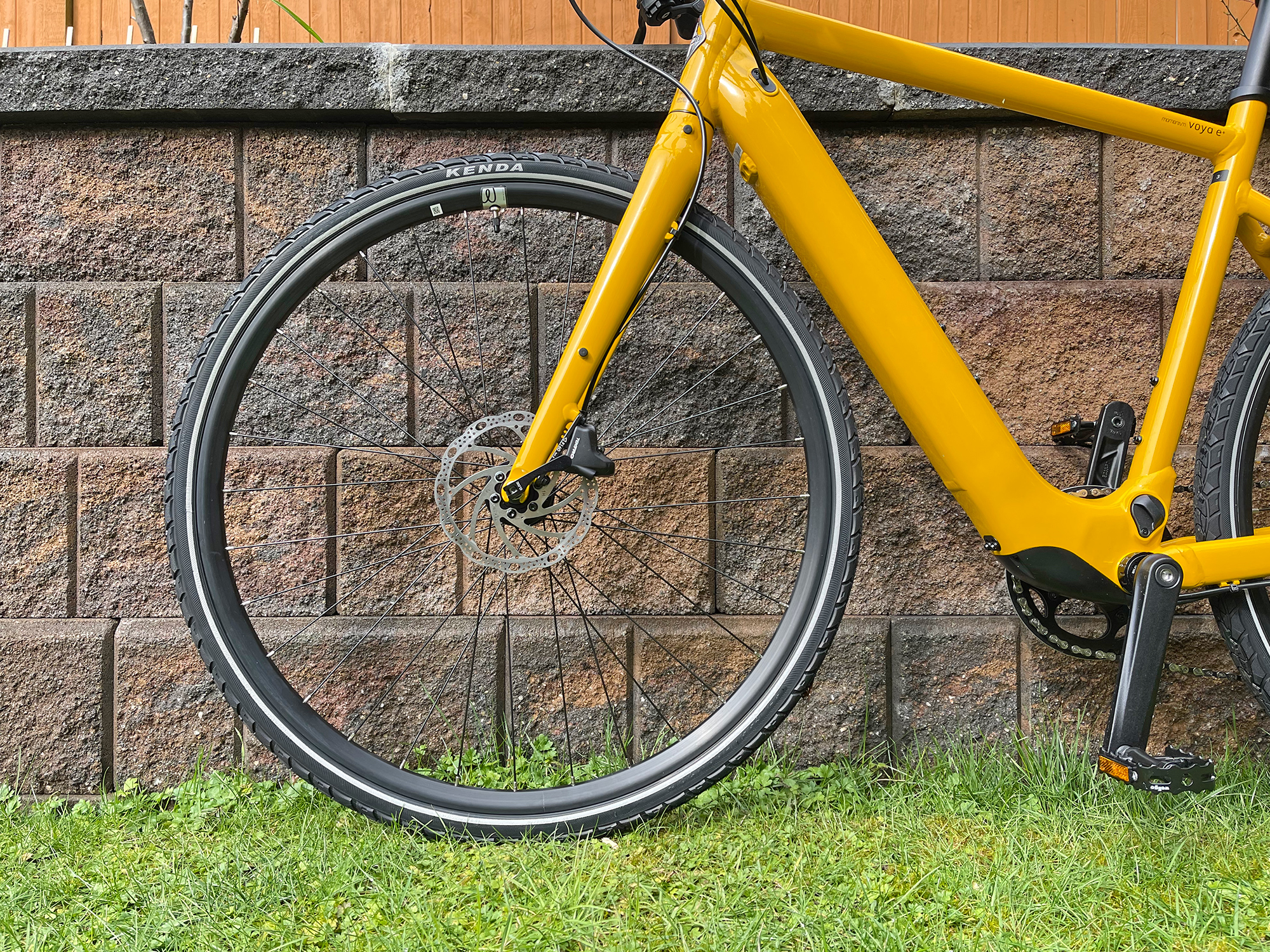
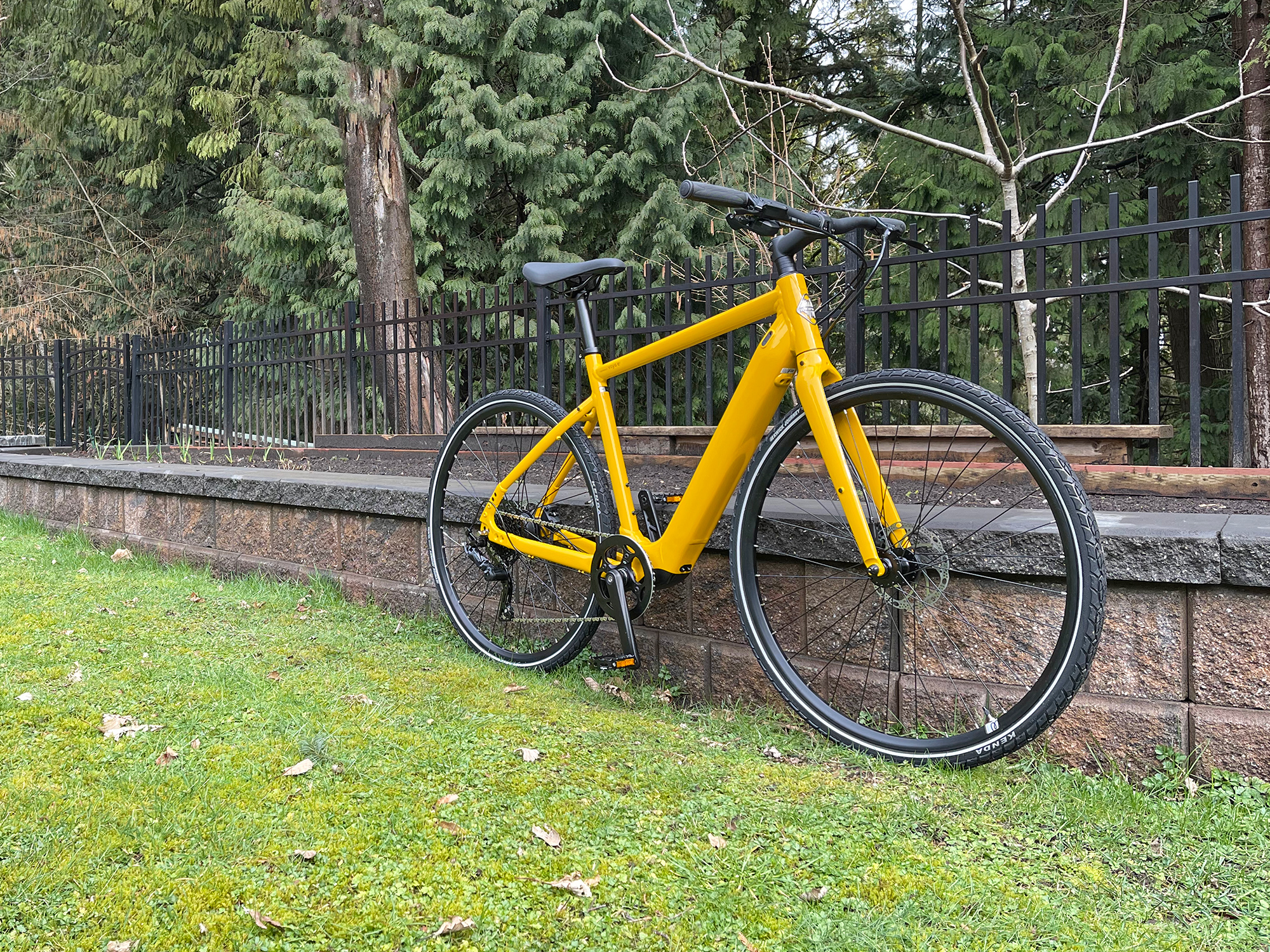
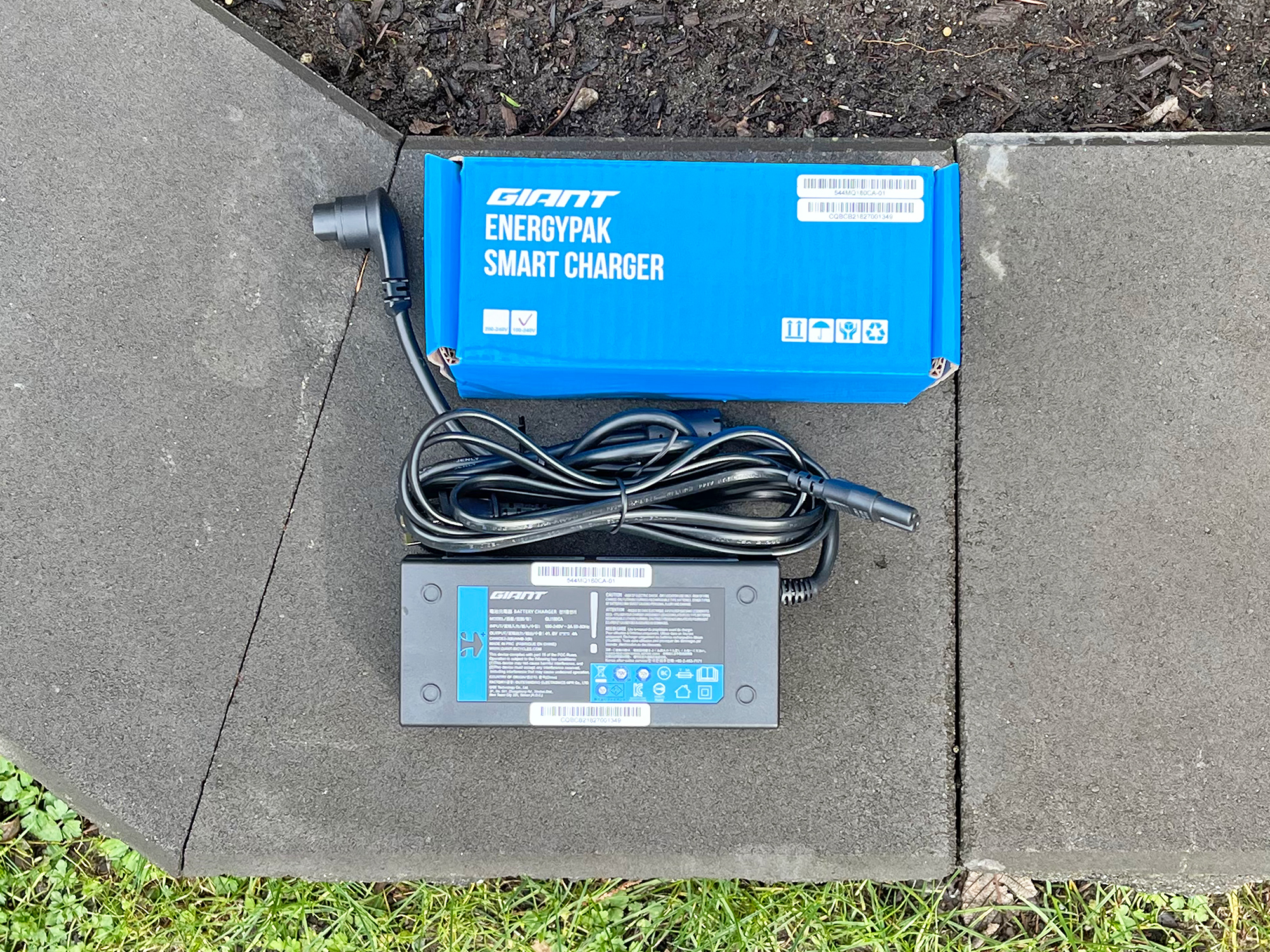
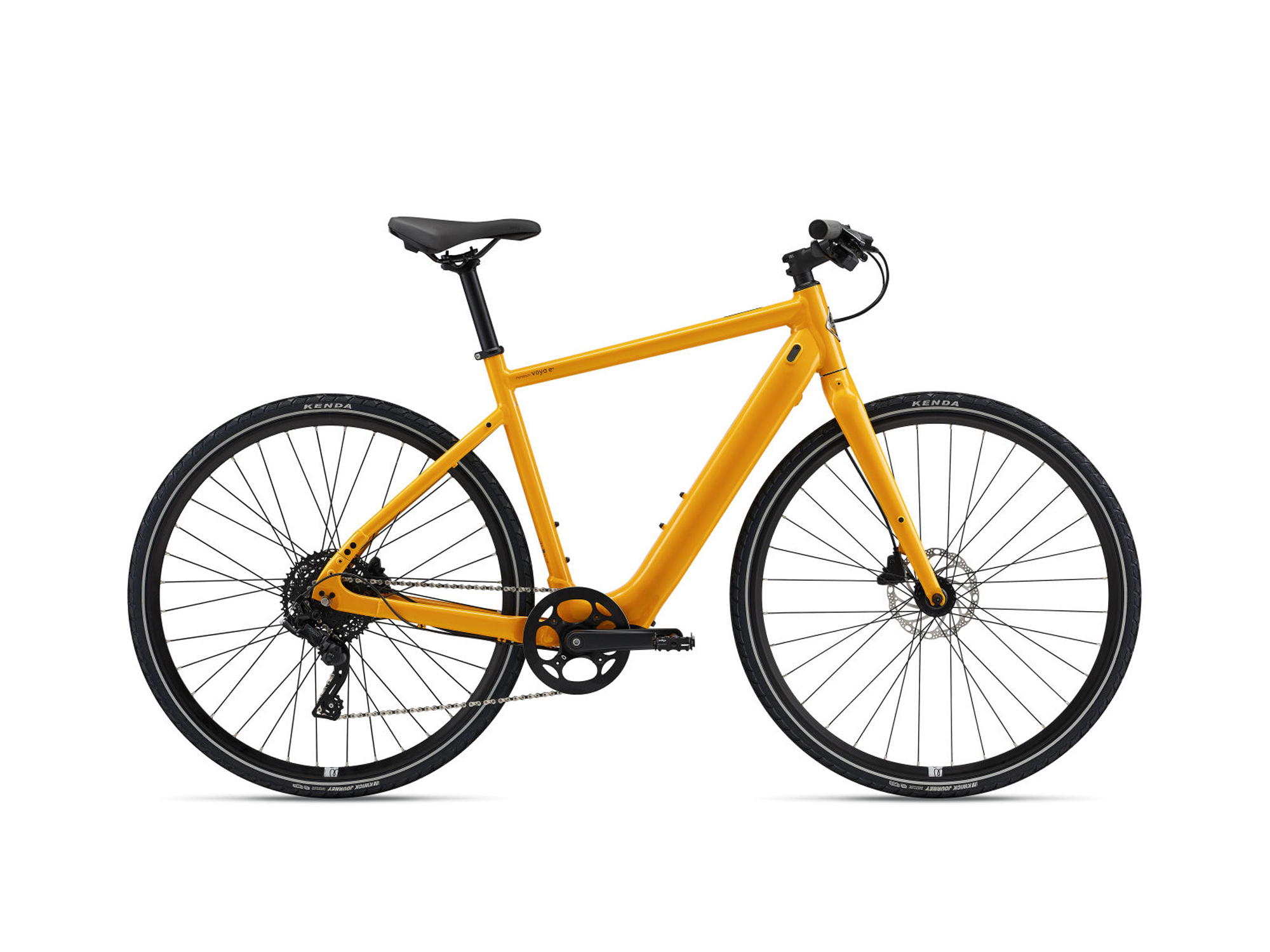


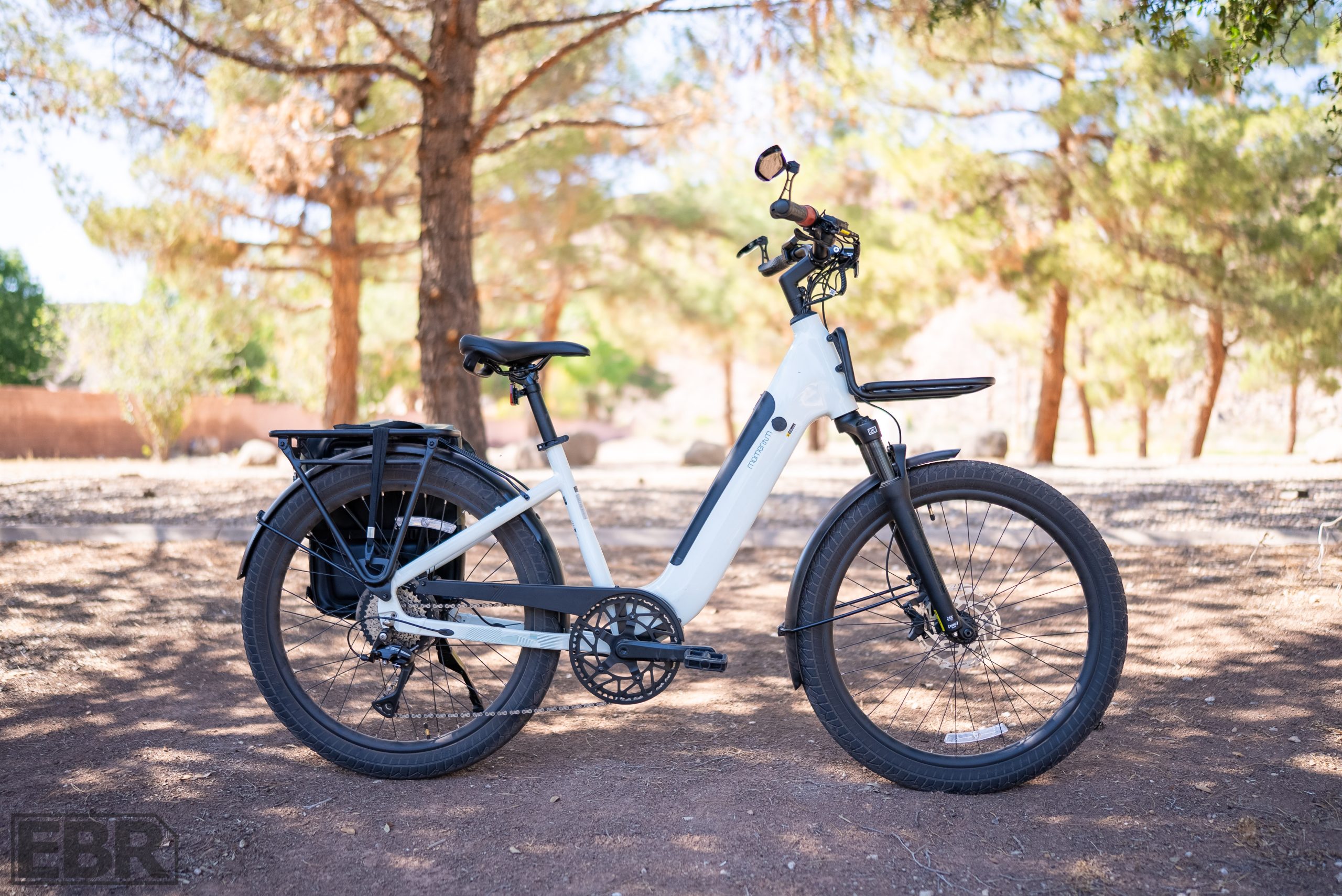
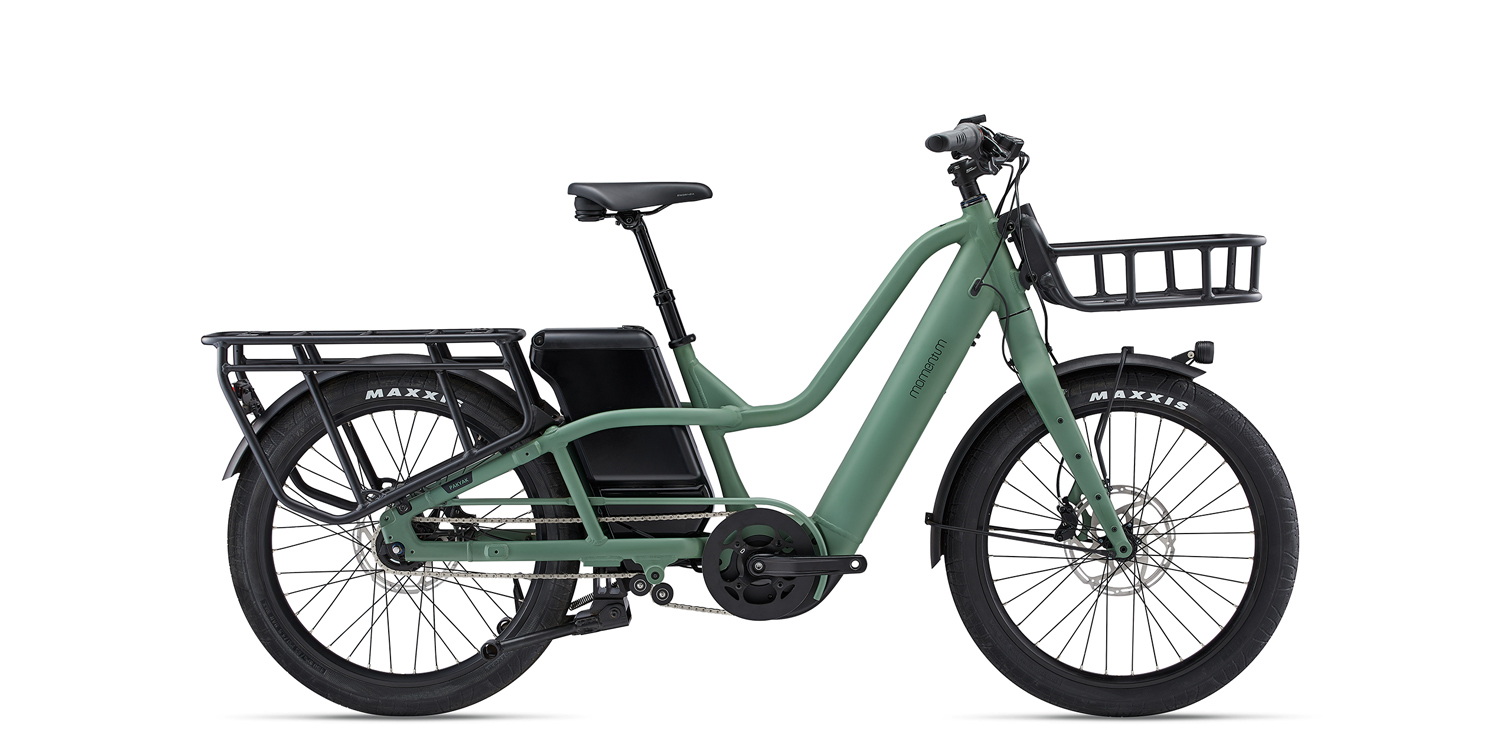
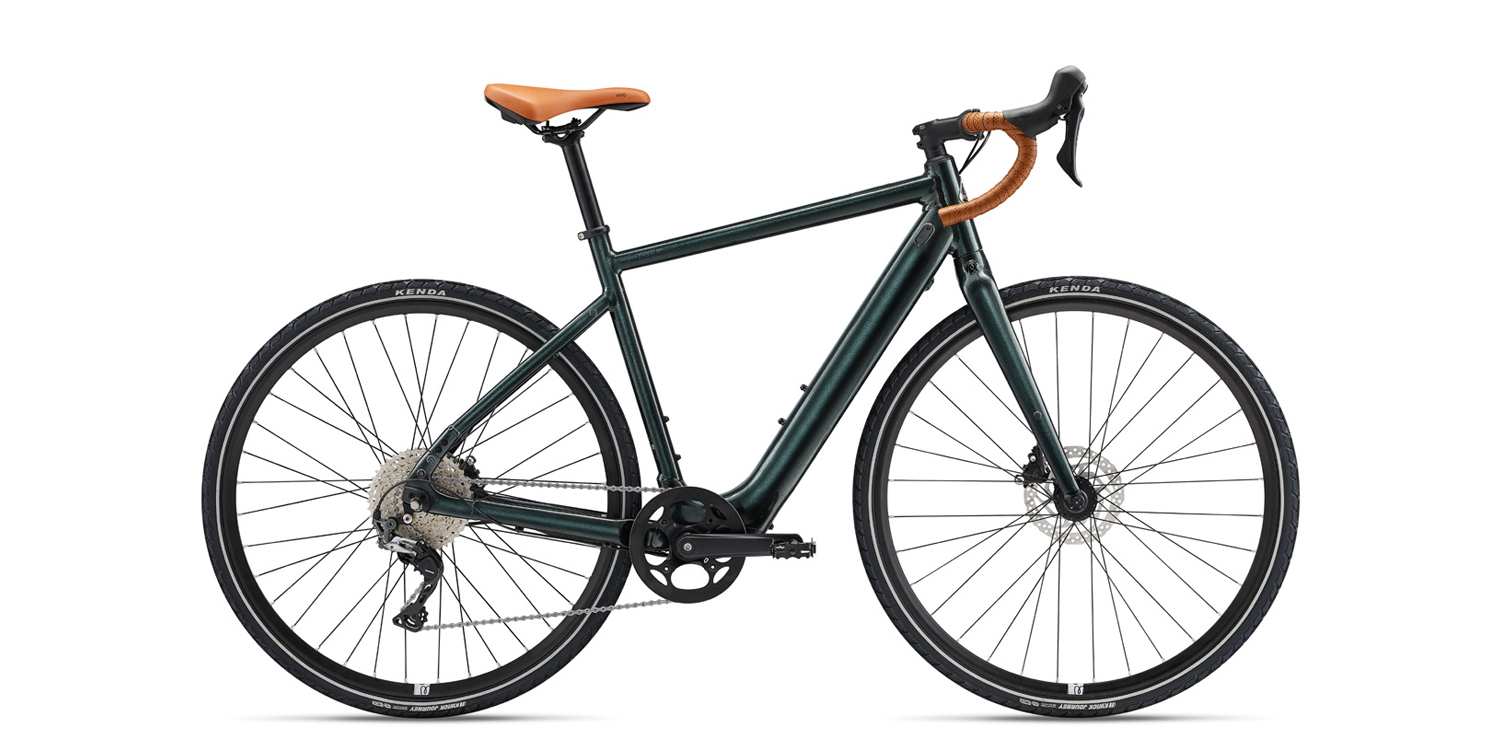
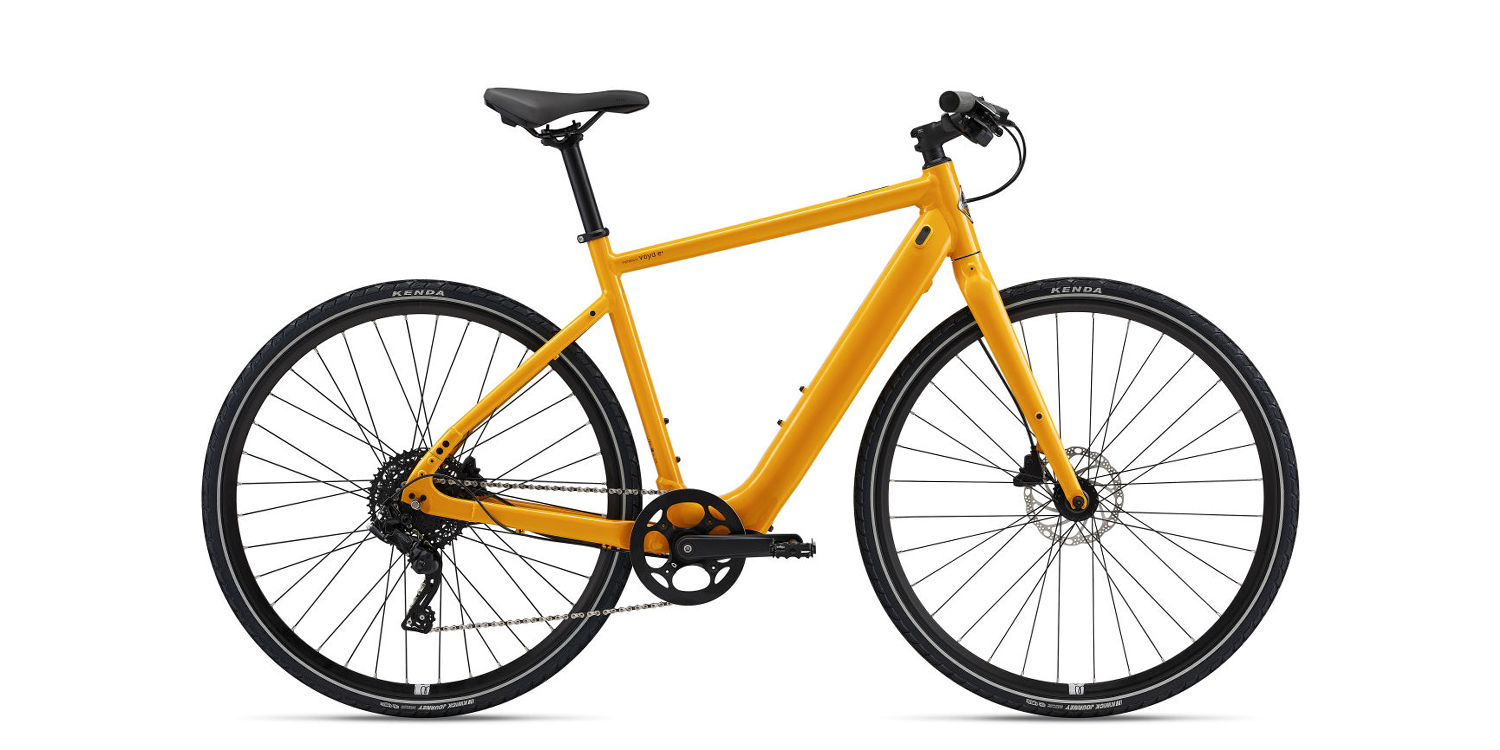
Will says
I purchased the dark green version of this flat bar model last year when it was listed for $2,400 because it ticked most the boxes for me, and despite the price having come down considerably within the past year (assuming perhaps because they are not selling many yet…), I don’t regret the purchase and it has been everything I wanted and needed it to be. It is even on sale now I noticed on their website for much much less than I paid a year ago and I believe would be an incredibly good deal for anyone considering one of these. I typically worry about quality when the price seems too low to me but maybe they are having a challenge getting the word out and getting these noticed.
I have been following EBR since about 2017 and getting much advice through Court’s reviews (to which I am grateful) and this is the fourth electric bike I’ve owned. All the bikes I’ve owned, after doing much web research before purchasing, have been great… Raleigh Redux IE, Haibike Hardseven and a Juiced Ripcurrent. They are all great for what they are mostly designed to do but each also lack in some regard and in some instances a significant regard (like the old small chain ring Bosch CX that is nearly impossible to pedal without motor assistance…). This Momentum Voya E+3 is ‘pound for pound’ as they say likely the overall best I’ve owned in design and performance. I suppose you could upgrade some component quality as an owner but it doesn’t lack performance with what it has.
The whole bike holds its own well. The forty pound weight is much much much more manageable. It is a very fluid riding experience and seems to adapt to the rider quite well as it doesn’t jerk ya around and responds adequately in every situation. It is pretty sleek and hides its bulky ebike characteristics quite well. The best thing to me with this bike is that it can be pedaled without motor/battery assistance and it actually rides surprising well without it; it indeed seems to carry its own ‘momentum’ (pun intended) as even up slight inclines it can be pedaled without electric (probably difficult up steep stuff though). On very steep hills I down shift to the lowest gear and zigzag so as to not pressure the motor too much and it works great. I am 5′ 10/11 and bought the medium even knowing the large would be a little better for me because a medium size resale would likely be easier yet the bike would still be manegeable for my height as I typically fall in that in between medium and large range.
Many companies most affordable option seem to squeeze you into having to buy the extras that come with via built into their bike (which can amount to ALOT of money) …the fenders, the lights, the racks, the kickstand, the monstrously large excessive expensive battery, etc. I like that much of this can be added on at will later making it easier to get into a good quality ebike that is foundationally decent. I use it to commute 2 to 4 days a week 10 mile trip and it performs excellently. I also ride a Cannondale Topstone 1 analog road bike.
Thanks,
Will
Court says
What a great update, Will! You shared so much detail, and I really appreciate that. It’s nice to hear about your journey, and what you are enjoying about this new Momentum model. Much like you, I also have an analog or “acoustic” bicycle that I still ride and enjoy. Mine is a full suspension mountain bike though, vs. a road bike like you :)
Will says
Yeh, actually the topstone is a gravel bike I probably should have said, not technically road I guess, but I have some light Bontrager Allweather road tires on it… The Shimano gravel based grx drive train on it has some better lower gear ratios for climbing the steepest of these tennessee hills here. The real steep ones I ride are 25mph residential very low-traffic streets so I can pedal and weave shoulder to shoulder up it with the Voya also in its lowest gear and it handles it very well without sounding strained.
I guess I should add for the ‘cons’ with the Voya in my experience are that the dark green paint is very nice looking but lacks lots of high protective coatings I think… but, even with some susceptible scuffing areas, tiny chips or scrapes, bike lock scratches etc, the bike still looks nice overall and can be touched up. The battery pullout plug is a slight challenge to get a good grip on and pull completely out to twist out of the way for charging sometimes but, I still think its a really good solid design and feels sealed and secured well when you put the plug back in, especially compared to any of the other ebikes of my experience. I agree the battery/level indicator on the top bar takes your eyes off the road a bit too much so you have to be mindful and plan ahead. And lastly, 20mph is limiting but, I’ve adapted over time to just let coasting and the bike do more of the work when in areas I’d typically be doing over 30 on the topstone. The other ebikes in my experience had a lot of yanking you around the motor assistance limit but the Voya does not, which is great.
Thanks Court!